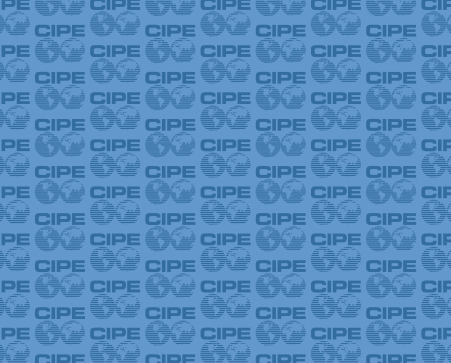
By Stephanie Bandyk and Laura Van Voorhees
As the U.N. General Assembly delegates return to their countries after setting the 2015 Sustainable Development Goals (SDG) agenda, members now face the task of making this ambitious set of goals a reality. Despite the rigor put into crafting the goals and indicators, there is no one-size-fits-all solution. Therefore for effective implementation that takes into account each country’s respective set of challenges, public and private enterprise, governments, and people and civil society can use KPMG’s 2015 Change Readiness Index (CRI) to advise their implementation strategies.
“Change readiness” is defined by the index as the capability of a country – its government, private and public enterprises, people and wider civil society – to anticipate, prepare for, manage and respond to a wide range of change drivers, proactively cultivating the resulting opportunities, and mitigating potential negative impacts.
The CRI tagline, “no government, business, or society is immune to change,” reflects that siloed improvements — for example, rise in GDP without strong governance and rule of law mechanisms — may merely be temporary developments. In fact, some overall findings of the 2015 CRI show that wealth generation alone is not enough for change readiness. In order for the post-2015 development agenda to indeed be sustainable, it is crucial to build resilience from the community to global levels to both overcome financial and social shocks as well as capitalize on political and economic opportunities such as technology, competition, and transitions in government.
Enterprise, government, and people and civil society capabilities form the index’s three pillars and underscore that such an ambitious agenda requires support from all stakeholders. Somewhat new to the table is the private sector. At the Washington, DC, launch of the 2015 CRI, Louise Kantrow, Permanent Representative to the United Nations for the International Chamber of Commerce, commented on the change in private sector’s involvement in drafting the SDGs versus their predecessor, the Millennium Development Goals.
“The private sector is no longer [considered the] source of the problem, but the solution.” Among other tools to help the private sector tackle the SDGs, the CRI offers individual and comparative risk assessments for the 127 countries in this year’s report, as well as snapshots into economic diversification and openness, the informal and financial sectors, business environment and technology infrastructure.
The CRI holds powerful potential for peer learning among countries facing similar challenges, explained Charlotte Nan Jiang, Private Sector Development Specialist at World Bank. In particular, the 2015 CRI highlights the influence of effective fiscal budgeting, government strategic planning, and corruption crack downs in the cases of the Philippines, India, and Cambodia. The Philippines is again ranked the top lower-middle income country in the CRI (33rd overall) due to strong performance in the government capability pillar, driven by effective fiscal and budgeting processes.
Rising from 65th to 48th of the 90 countries included in the 2013 CRI, India has also improved considerably – reflecting optimism over the new government that took power in May 2014, and subsequent plans to crack down on corruption, reduce costly subsidies, and increase public investment in infrastructure and housing.
Compared to its peers in the low income country category, Cambodia ranks 15 positions higher in the overall table. This achievement can be traced to its placement in the enterprise pillar (34th), and fourth place progress in the economic diversification sub-index and a first place on the informal sector index. However, a low (69th) standing on people and civil society capability highlights room for improvement in terms of human capital, political stability and freedom of expression, gender, and inclusiveness of growth.
During the DC launch, Managing Director of Global Analytics at Gallup Inc. Jon Clifton cautioned that using the correct metric is critical to gaining real insight into ground reality. Metrics that implementers have used to guide their work have historically used data not updated frequently enough to give a real-time picture of many countries around the world. In response to these cautions, one can welcome the report’s focus on inputs not outputs.
In focusing on measured “inputs” such as investment into infrastructure or supportive policy environments, as opposed to “outputs” – GDP or productivity – governments and other stakeholders who have control over inputs and can concentrate on improving areas of weakness. Though conducting rigorous data analysis in many of these areas will continue to be an uphill battle, there are important lessons learned to be gleaned from this report. Practitioners must strive to find innovative ways to measure on the ground realities in order for the SDGs to truly have an impact.
Read the 2015 Change Readiness Index Report or access the online interactive tool.
Stephanie Bandyk is a Program Assistant for Global Programs at CIPE. Laura Van Voorhees is a Program Officer for Global Programs at CIPE.
Published Date: November 02, 2015